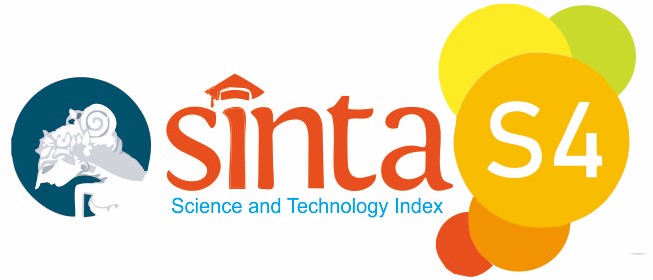Pengukuran Penerimaan Website Mulawarman Online Learning System (MOLS) Pada Universitas Mulawarman Menggunakan Theory Of Planned Behavior (TPB)
DOI:
https://doi.org/10.30872/atasi.v2i1.274Keywords:
MOLS, Theory of Planned Behavior, SEM-PLS, SmartPLSAbstract
One of the information technology services available at Mulawarman University is MOLS (Mulawarman Online Learning System). Implementing the Mulawarman Online Learning System (MOLS) is a strategic action to improve the learning process and interaction between students and lecturers in higher education. The Mulawarman Online Learning System (MOLS) functions as a tool to support learning management and make interaction between students and lecturers easier. The purpose of this study is to see the level of user acceptance of MOLS technology using the Theory of Planned Behavior, where the results of this study can be used for strategic decision making based on research results. Sampling used is all faculties at Mulawarman University and obtained as many as 104 respondents. The data obtained were analyzed using SmartPLS software version 4. Based on the results of data analysis, the following results were obtained: (1) perceived behavioral control had a positive and significant effect on behavior intention, (2) Attitude had no positive and significant effect on behavior intention, (3 ) Subjective Norm has a positive and significant effect on behavior intention and (4) behavior intention has a positive and significant effect on behavior.
References
Angelina, C., Sharon, S., Lim, S., Lombogia, J. Y. R., & Aruan, D. A. (2020). Pengaruh Current Ratio, Debt to Equity, Perputaran Kas dan Total Asset TurnOver (TATO) Terhadap Profitabilitas pada Perusahaan Food & Beverages yang terdaftar di Bursa Efek Indonesia. RISET & JURNAL AKUNTANSI, 4(1), 16.
Herfiyanto, P., Hariadi, B., & Wahyuningtyas, N. (2018). Analisis Pola Penerimaan Guru Terhadap Rapor Online Menggunakan Metode UTAUT ( Studi Kasus Pada SMA Negeri 8 Surabaya ). In Jsika (Vol. 7, Issue 1).
Ikbal, K. M., Santi, R., & Novika, S. (2018). Penerapan Metode Theory Of Planned Behavior (TPB) Terhadap Respon Pengguna Dalam Pemanfaatan E-Learning Pada UIN Raden Fatah Palembang. Jurnal Ilmiah Sistem Informasi, 1(1).
Irfandi, B. (2018). Strategi Peningkatan Penerimaan Aplikasi E-Learning Padaa Universitas Dr.Soetomo Mengunakan Technology Acceptance Model 2. International Reviews of Immunology, 66(1), 1-.
Nugroho, Y. (2021). Analisis Hubungan Nilai Hedonis dan Nilai Utilitarian Terhadap Niat Pembeli dengan Mediasi Kepuasan pada Kategori Pakaian di Shopee Surabaya. Skripsi, 7, 6.
Nur, U. (2019). Analisis Aktivitas Masyarakat Muslim Dalam Pembelian Online Menggunakan Theory Of Planned Behavior. Skripsi, 2, 1–13.
Pranatawijaya, V. H., Widiatry, W., Priskila, R., & Putra, P. B. A. A. (2019). Penerapan Skala Likert dan Skala Dikotomi Pada Kuesioner Online. Jurnal Sains Dan Informatika, 5(2), 128–137.
Pritama Arde, A. (2021). Evaluasi Penerimaan Penggunaan Sistem Informasi Akademik (SIAKAD) Universitas Jambi Menggunakan Unified Theory of Acceptance And Use of Technology (UTAUT). Jurnal Rekayasa Informasi, 10(1), 13–22.
Putra, H. B., Pradita, N., & Hayuningtias, K. A. (2020). Prediksi Niat Penggunaan Aplikasi Dan Permainan Daring Freemium Versi Berbayar Dengan Menggunakan Model Tpb. Managament Insight: Jurnal Ilmiah Manajemen, 15(2), 130–143.
Sakdiyah, L., Effendi, R., & Kustono, A. S. (2019). Analisis Penerimaan Penggunaan E-Learning dengan Pendekatan Theory of Planned Behavior (TPB) pada Mahasiswa Akuntansi Universitas Jember. E-Journal Ekonomi Bisnis Dan Akuntansi, 6(2), 120.














